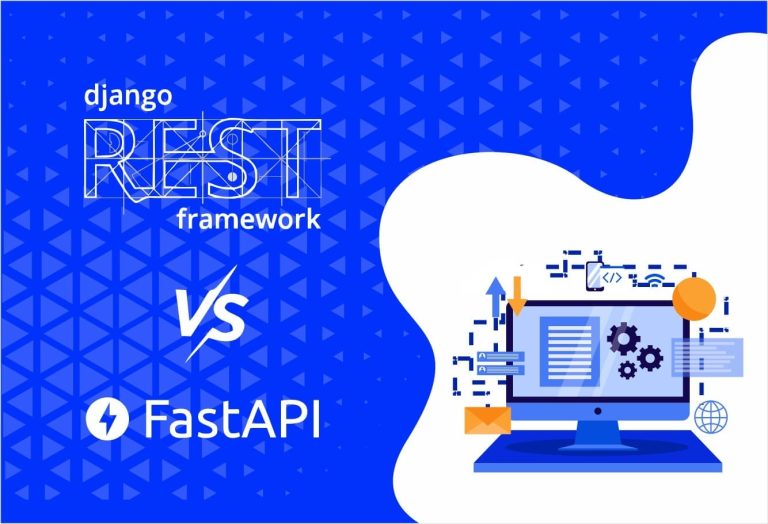To stay competitive, businesses today are focusing on ways to improve operational efficiencies, enhance the customer experience, optimize costs, and leverage the latest software development services Whether you’re developing your first product or scaling an enterprise, one of the most critical decisions you have to make is whether to build the software in-house or hire an external firm to carry out the development.
Both alternatives offer significant benefits and pose unique challenges. The choice a business makes ultimately depends on its specific needs, expectations, budget, and the availability of skilled personnel. In this comprehensive guide, we will discuss the key issues of in-house development as well as software development outsourcing, their disadvantages and advantages, and attempt to provide the most appropriate and balanced solution for your business.
What Exactly Is In-House Software Development?
In-house development in this instance means the software to be developed is assigned to a full-time team of developers, project managers, testers, and designers, who the company has directly hired. This software development team is devoted to the business’s projects, and their objectives are closely aligned with the company’s long-term goals. They receive all the perks, benefits, incentives, and a salary from the company, just like any other employee. In short, they become a permanent asset and, in some respects, a significant financial commitment for the company.
In-house development refers to a scenario where a startup, company, or enterprise hires a development team to build its internal or client projects.
The Case for In-House Development
- Unparalleled Control Over the Project : While in-house teams are often two to three times more costly than an offshore development team, they give you the peace of mind that comes with complete control. Since they are your own employees, you can train them and manage them exactly as you see fit to meet your business needs and quality standards.
- Seamless Communication : Internal teams are much easier to communicate with than external ones. Because they are in the same location and time zone, they can have fewer projects, leading to quicker turnaround times and more direct, face-to-face problem-solving.
- A True Cultural Fit : An in-house software development team is a natural extension of your company. They are easier to control and align with your business values. They have a smaller workload and are quicker to operate because they are fully integrated into your existing systems and culture.
- Deep-Rooted Understanding : An in-house team has a much deeper, more nuanced understanding of the company, its business culture, and its brand values. This allows them to provide custom software development solutions that more accurately portray the business and its unique identity.
- Long-Term Suitability : This approach is uniquely suited for ongoing, core projects that require a consistent, deep understanding of the business and its technology stack. It provides a stable base of knowledge and expertise.
The Downside of In-House Development
- Exorbitant Cost Escalation : The costs incurred in the recruitment, onboarding, and retention of a skilled software engineer and other developers continue to be a significant concern. With each new addition, the aggregate software expenses, coupled with the company’s infrastructure and the requisite tools, keep escalating.
- Inadequate Resources : This is more of a global phenomenon, as the population is not growing at the same pace as technology. This is even more pronounced in specialized fields like AI software development , cloud technologies, and cybersecurity, where finding skilled experts locally is a major hurdle.
- Limited Capability : Similarly, the time and costs associated with acquiring new resources and skill sets to accommodate project expansion are likely to increase. This makes it challenging to pivot quickly to new technologies or methodologies.
- Attrition and Disengagement : The disengagement or departure of high-level employees and key team members of a company can be detrimental to the company. It creates a workflow imbalance and can significantly disrupt a project’s timeline and institutional knowledge.
What Exactly Is Outsourcing Software Development?
Outsourcing software development means working with another company, agency, or freelancer to create, develop, and maintain software. Typically, these are offshore or nearshore companies. You get international experts to work on your project on a contract or retainer basis rather than hiring full-time employees.
Many businesses, for instance, contract agencies in India, Eastern Europe, or Latin America for outsourcing development because they provide affordable, high-quality services. The goal is to find dedicated developers who are a perfect fit for your project needs, regardless of their location.
The Case for Outsourcing Development
- Dramatically Reduced Expenses : The growth of industries and the increasing complexity of projects have made it a norm to embrace the alternative of outsourcing. All businesses, at some point, tend to gain from keeping a certain portion of tasks outsourced. It eliminates the need for salaries, benefits, and office overhead, resulting in substantial savings.
- Availability of Vetted Talent : Multiple platforms and agencies can assist businesses in outsourcing. Their services are limited strictly to the recruitment of vetted software engineers, developers, and other specialists, saving you the hassle of a long and costly hiring process.
- Enhanced Market Features : With the advent of outsourcing, businesses have the opportunity to assemble a new project team within a short period. This rapid deployment creates aggressive competition and allows for faster innovation.
- Highly Scalable and Flexible Operations : Outsourcing ventures have the capacity to effortlessly increase and decrease the size of the teams according to your project’s needs. This form of flexibility is highly important for companies that experience a varying volume of work, enabling truly scalable software development.
- Focus on Core Business Activities : Companies that outsource the development process gain the ability to focus on strategy, marketing, and core operational processes, while external, specialized professionals handle the development aspect.
- Faster Time-to-Market : With an external software development company that can hit the ground running, you can significantly reduce the time-to-market for software development and get your product to customers faster than competitors.
The Problems That Come with Outsourcing Development
- Reduced Command : Outsourcing development indicates that there is a measure of trust given to an external organization. While reliable vendors provide a track of the work done, you might not have a full grasp or command of the work that is done day-to-day.
- Difficulty with Communication : Distance, time zone differences, language, and cultural barriers can at times make communication problematic. These hurdles require strong project management and clear processes to overcome.
- Concerns with Information Security : When outsourcing, you must trust that a third-party company will safeguard your most advanced and sensitive information. If there are no robust legal frameworks or agreements to protect business information, numerous risks could arise.
- Inconsistencies in Quality : The experience of the outsourcing partner, when compared to others, could show differences in the quality that is offered. If a vendor is wrongfully chosen, it could cause the project to run late, the budget to go over, or the result to be of very low quality.
In-House vs. Outsourcing: Key Differences
| Factors | In-House Software Development | Outsourcing Software Development |
|---|---|---|
| Control | Complete supervision. You have hands-on management of your own team. | Partial supervision. The external software development company manages the day-to-day. |
| Costs | Pronounced (salaries, infrastructure, benefits). High fixed costs. | Affordably priced, flexible features. Lower variable costs. |
| Talent Availability | Geo-locked. Finding highly specialized skills can be challenging. | Worldwide. Access to a global talent pool of experts. |
| Scalability | Costly and sluggish. Hiring and firing is a slow process. | Affordable and agile. You can easily scale teams up or down. |
| Communication | Easier, face-to-face, and within the same time zone. | Can be challenging due to remote work, time zones, and cultural barriers. |
| Speed | Slower due to the lengthy hiring process. | Faster. Teams can be assembled and start work almost immediately. |
| Long-term Suitability | More appropriate for core, ongoing projects. | More appropriate for shorter, specialized, or temporary needs. |
The Hybrid Approach: The Best of Both Worlds
Many businesses have started to employ a hybrid development model—keeping part of the core development in-house while outsourcing whole modules or complete tasks to agencies in lower-cost countries. For instance, a company may keep in-house developers to handle the strategy and architecture, while outsourcing mobile app development, testing, or AI software development to specialized agencies.
This strategy allows for a perfect balance of control and cost flexibility while effectively eliminating many of the possible risks. It’s a pragmatic approach that allows a business to maintain a small, strategic internal team while leveraging the benefits of a global talent pool and cost savings.
Conclusion
Analyzing the factors is a very complex exercise, as there is no single correct approach to in-house vs outsourcing software development. Each method has its own merits and challenges, and the right one for your business is entirely dependent on its current level of maturity, the specific nature of the project, the available budget, and the set objectives.
If the business seeks complete control over the project and a longer-term commitment to cultural alignment, then in-house development is likely the preferred approach. If the business aims to save costs and time while rapidly expanding into a new market or launching a new product, outsourcing software development is a favorable option.
And if you desire the flexibility to shift between both models, consider the hybrid approach.
Ultimately, the choice must align with the business’s overall goals to ensure the software provided is of premium quality, supporting a strong foundation for further business advancement.



























































